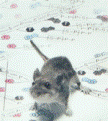Papers in the Biological Sciences

Jay F. Storz Publications
Document Type
Article
Date of this Version
February 2008
Abstract
Phylogenetic reconstructions of the β-globin gene family in vertebrates have revealed that developmentally regulated systems of hemoglobin synthesis have been reinvented multiple times in independent lineages. For example, the functional differentiation of embryonic and adult β-like globin genes occurred independently in birds and mammals. In both taxa, the embryonic β-globin gene is exclusively expressed in primitive erythroid cells derived from the yolk sac. However, the “ε-globin” gene in birds is not orthologous to the ε-globin gene in mammals, because they are independently derived from lineage-specific duplications of a proto β-globin gene. Here, we report evidence that the early and late expressed β-like globin genes in monotremes and therian mammals (marsupials and placental mammals) are the products of independent duplications of a proto β-globin gene in each of these two lineages. Results of our analysis of genomic sequence data from a large number of vertebrate taxa, including sequence from the recently completed platypus genome, reveal that the ε- and β-globin genes of therian mammals arose via duplication of a proto β-globin gene after the therian/monotreme split. Our analysis of genomic sequence from the platypus also revealed the presence of a duplicate pair of β-like globin genes that originated via duplication of a proto β- globin gene in the monotreme lineage. This discovery provides evidence that, in different lineages of mammals, descendent copies of the same proto β-globin gene may have been independently neofunctionalized to perform physiological tasks associated with oxygen uptake and storage during embryonic development.


Comments
Published in Proceedings of the National Academy of Sciences USA 105:5 (February 5, 2008), pp. 1590–1595; doi 10.1073/pnas.0710531105 Copyright © 2008 The National Academy of Sciences of the USA. Used by permission.